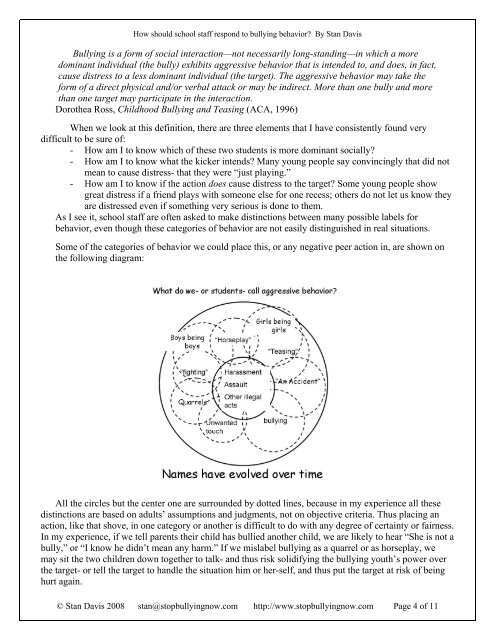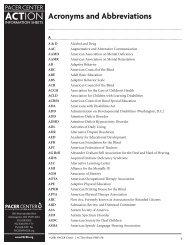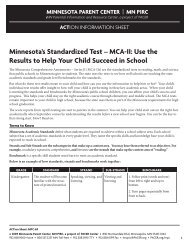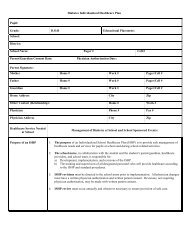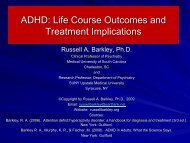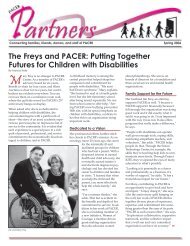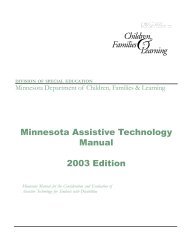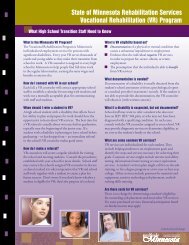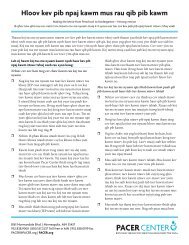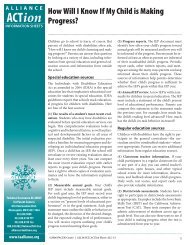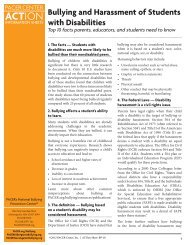How should school staff respond to bullying ... - PACER Center
How should school staff respond to bullying ... - PACER Center
How should school staff respond to bullying ... - PACER Center
- No tags were found...
You also want an ePaper? Increase the reach of your titles
YUMPU automatically turns print PDFs into web optimized ePapers that Google loves.
<strong>How</strong> <strong>should</strong> <strong>school</strong> <strong>staff</strong> <strong>respond</strong> <strong>to</strong> <strong>bullying</strong> behavior? By Stan DavisBullying is a form of social interaction—not necessarily long-standing—in which a moredominant individual (the bully) exhibits aggressive behavior that is intended <strong>to</strong>, and does, in fact,cause distress <strong>to</strong> a less dominant individual (the target). The aggressive behavior may take theform of a direct physical and/or verbal attack or may be indirect. More than one bully and morethan one target may participate in the interaction.Dorothea Ross, Childhood Bullying and Teasing (ACA, 1996)When we look at this definition, there are three elements that I have consistently found verydifficult <strong>to</strong> be sure of:- <strong>How</strong> am I <strong>to</strong> know which of these two students is more dominant socially?- <strong>How</strong> am I <strong>to</strong> know what the kicker intends? Many young people say convincingly that did notmean <strong>to</strong> cause distress- that they were “just playing.”- <strong>How</strong> am I <strong>to</strong> know if the action does cause distress <strong>to</strong> the target? Some young people showgreat distress if a friend plays with someone else for one recess; others do not let us know theyare distressed even if something very serious is done <strong>to</strong> them.As I see it, <strong>school</strong> <strong>staff</strong> are often asked <strong>to</strong> make distinctions between many possible labels forbehavior, even though these categories of behavior are not easily distinguished in real situations.Some of the categories of behavior we could place this, or any negative peer action in, are shown onthe following diagram:All the circles but the center one are surrounded by dotted lines, because in my experience all thesedistinctions are based on adults’ assumptions and judgments, not on objective criteria. Thus placing anaction, like that shove, in one category or another is difficult <strong>to</strong> do with any degree of certainty or fairness.In my experience, if we tell parents their child has bullied another child, we are likely <strong>to</strong> hear “She is not abully,” or “I know he didn’t mean any harm.” If we mislabel <strong>bullying</strong> as a quarrel or as horseplay, wemay sit the two children down <strong>to</strong>gether <strong>to</strong> talk- and thus risk solidifying the <strong>bullying</strong> youth’s power overthe target- or tell the target <strong>to</strong> handle the situation him or her-self, and thus put the target at risk of beinghurt again.© Stan Davis 2008 stan@s<strong>to</strong>p<strong>bullying</strong>now.com http://www.s<strong>to</strong>p<strong>bullying</strong>now.com Page 4 of 11


